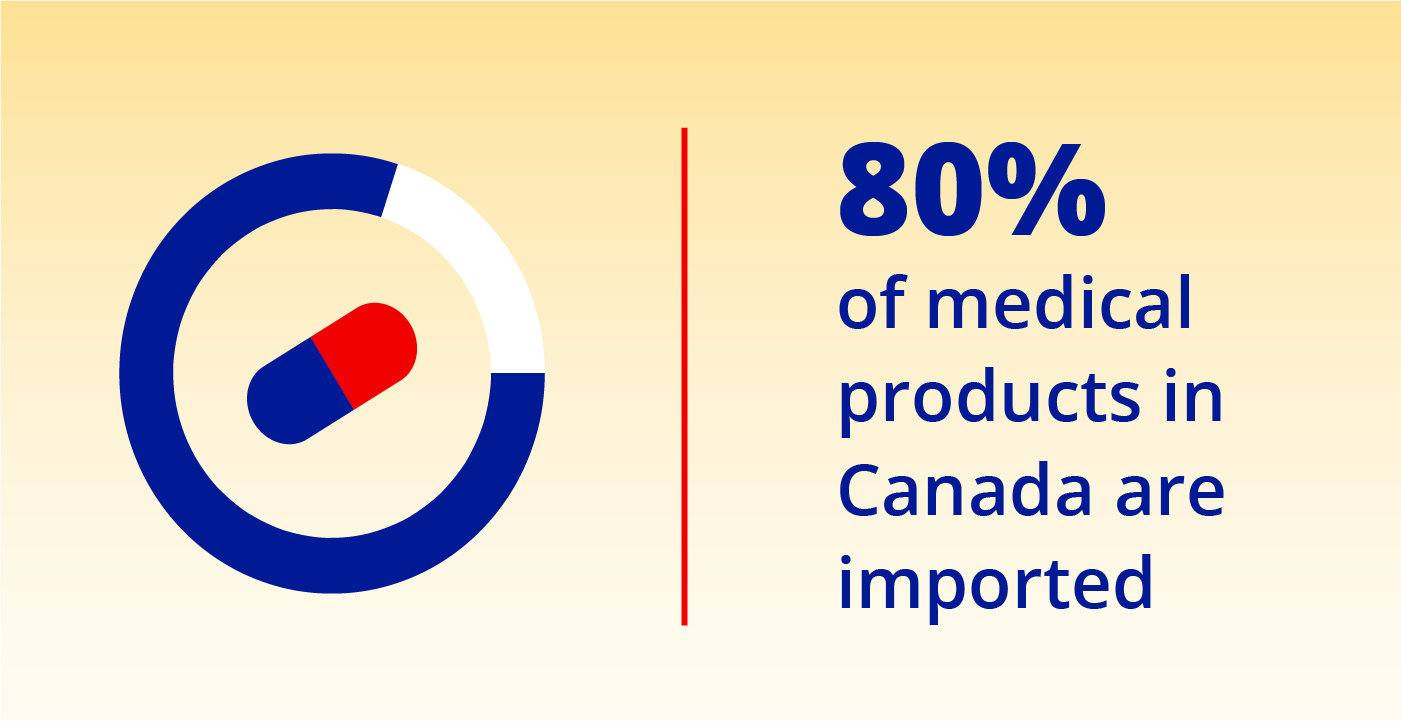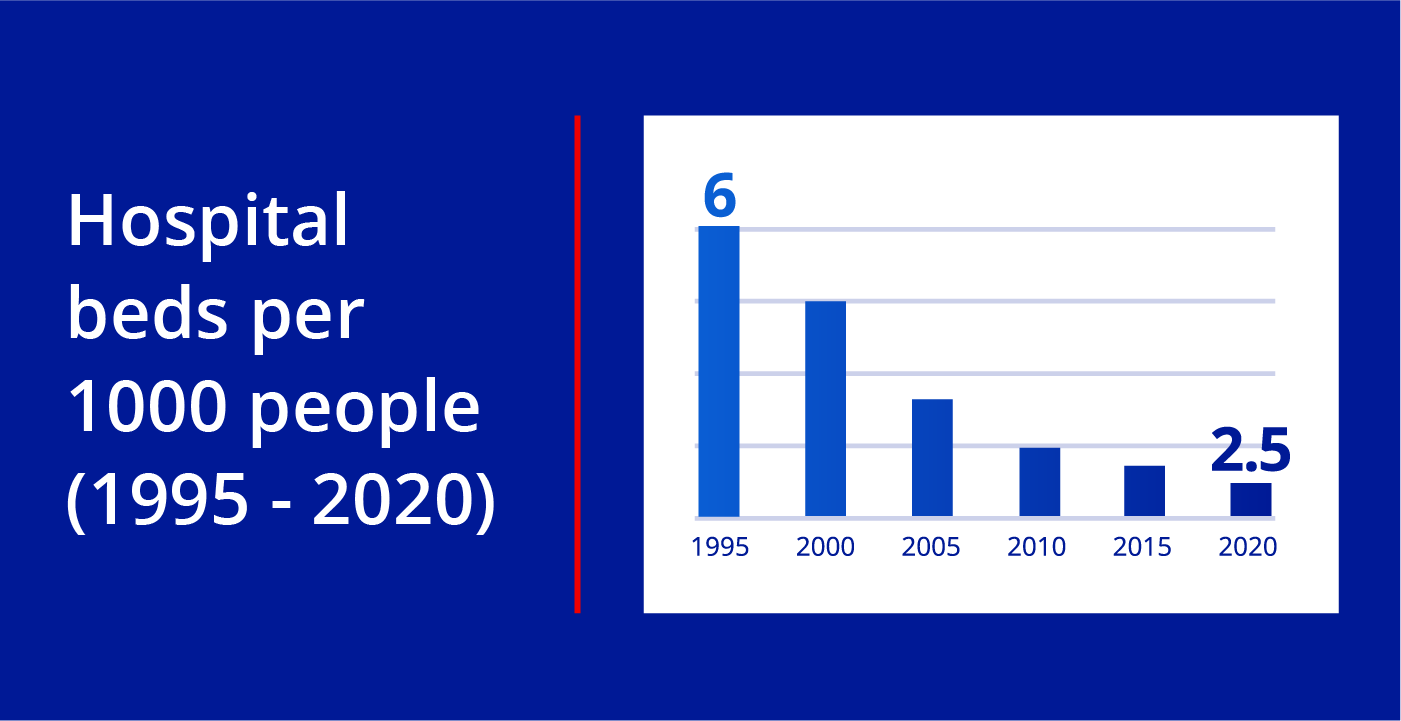It’s been over a year since COVID-19 was declared as a global pandemic. Within this year, advancements to health care in Canada and medical supplies logistics have taken centre stage. Shipments of PPE (protective personal equipment) and a variety of vaccinations have been a part of the largest distribution effort in history. Here at Purolator, we’ve been busy delivering COVID-19 testing kits and diagnostic equipment to hospitals to help accelerate testing goals. In fact, during 2020, Purolator’s overall health care shipments increased by 16 per cent.
Beyond COVID-19, there are many health care stats and facts that can’t take a back seat – we must focus on supporting other health care needs alongside COVID-19. Are health care providers and their patients getting the support they need? How can logistics providers offer them services to help ensure the health care sector’s supply chain strategy is effective and future-proof? Here are nine ways suppliers in Canada are finding ways to do more with less in today’s changing demographic and economic realities of our health care system.
-
Nearly ⅓ of Canadian adults have diabetes or are prediabetic.
The demand for at-home diabetic testing is growing. Innovative products allow frequent and consistent testing, without the need for a health care professional. Beneficial for the patient and the health care provider, there are many up-and-coming home testing devices available (to treat diabetes and beyond). Testing kits can be sent Canada-wide, via a regular courier service – unlike some older specialized equipment that required specific handling.
-
2/3 of those aged 65-75 take 5+ types of prescription medication over the course of a year.
For patients who are elderly, live in remote areas or have mobility impediments, getting to a pharmacy for a refill isn’t always an easy option – even more so if they have multiple prescriptions. In these instances when medication needs to get directly to the patient, delivery services such as guaranteed delivery times and notifications ensure that these patients can get what they need, exactly when they need it.
-
93% of Canadians 65+ years of age live in personal residences.
The vast majority of seniors still live at home, as opposed to a nursing home or other residential setting. To get medical equipment and any other support they require to their homes in a timely manner, it’s crucial to use a delivery provider with a strong last-mile. This means a network that covers a vast area, not just largely populated locations. In turn, you’ll provide reliable and fast deliveries to each and every destination.
-
80% of medical products are imported.
Currently, the majority of medical devices used in Canada are imported, with the U.S. being accountable for around 68 per cent of Canada’s total exports. As trade is highly relied upon, strong partnerships are needed to maintain streamlined and reliable service across the U.S. border, and other imports, too. Work with a delivery provider that ensures every international shipment meets a compliant customs process.
-
An organization can face a $500,000 fine for violating the Personal Health Information Privacy Act (PHIPA).
The Personal Health Information Protection Act (PHIPA) sets out rules for the collection, use and disclosure of personal health information. To ensure that the patients’ and providers’ privacy is respected throughout the delivery process, non-descriptive packaging, strong security, tamper-evident packaging and a clean end-to-end chain of custody should be used by your delivery provider. Not only will this protect the privacy of the recipient and the sender, but tamper-evident and plain packaging will also reduce the risk of theft.
-
The number of senior citizens in Canada is set to rapidly increase between 2021 and 2031, from 18.7% to 23.1% of the population.
As the number of seniors in Canada increases, it’s likely we’ll see a growing number of seniors living in their own homes. It’s important to offer flexible delivery services to allow the aging population to stay independent and maintain their health from home. Make sure medication, supplies and scheduled health care needs are always delivered at a convenient time – offer end-to-end shipment tracking and the option to sign for a package remotely, to avoid a missed delivery.
-
2 million extra flu shots were ordered for the 2020-21 flu season.
Due to the COVID-19 pandemic, Canada ordered 13 million flu vaccines, up from 11 million in 2019. Scaling up in times of need is paramount, particularly in health care. Fluctuating needs for a specific medication, PPE and even specialized shipments such as medical technology require a delivery provider with a large number of their own transportation resources. Choose a delivery provider that can offer you the ability to rapidly scale with your needs, without lengthy preparations or obstacles.
-
The number of hospital beds per 1,000 continues to decline from 7 to 2.5.
As limited space pushes care beyond the hospital, patients can be treated at home with specialized deliveries. Medical equipment delivery such as hospital beds at home, or health care technology including at-home testing, can be installed where they’re needed with white-glove service. Also, urgent shipments, such as time-sensitive clinical samples, can be taken from a home environment and delivered directly to a lab with temperature-controlled transportation.
-
Health care technology is big business: Virtual health care visits skyrocketed from 4% to 60%.
As COVID-19 restrictions prevented many from leaving their homes for non-essential reasons, telehealth services saw exponential growth over 2020. As the world starts to open back up, virtual appointments and other forms of health care technology are here to stay – they’re efficient, safe and even allow for prescriptions to be delivered directly to the patient. From a transportation perspective, tracking notifications and the option to remotely sign for a package make home deliveries a convenient option for all ages.
Ensure the health care sector’s supply chain strategy is future-proof with the right delivery provider.
The future of health care in Canada is certainly full of challenges, but these supply chain essentials can make meeting needs a little easier on providers and the people who rely on them. It’s critical to work with the right partners to ensure health care services continue to become more convenient, efficient and available for all.
When looking for the right health care logistics provider, make sure they can offer the following solutions for you and your patients:
- Total visibility of shipment journey
- Customizable and flexible delivery preferences
- An extensive and scalable delivery network
- Special attention to sensitive and urgent shipments
- Online tools for customs paperwork and commodity classification
- Variety of pick-up options and drop-off locations
- Import/export specialists available for support
- Efficient and flexible returns process




